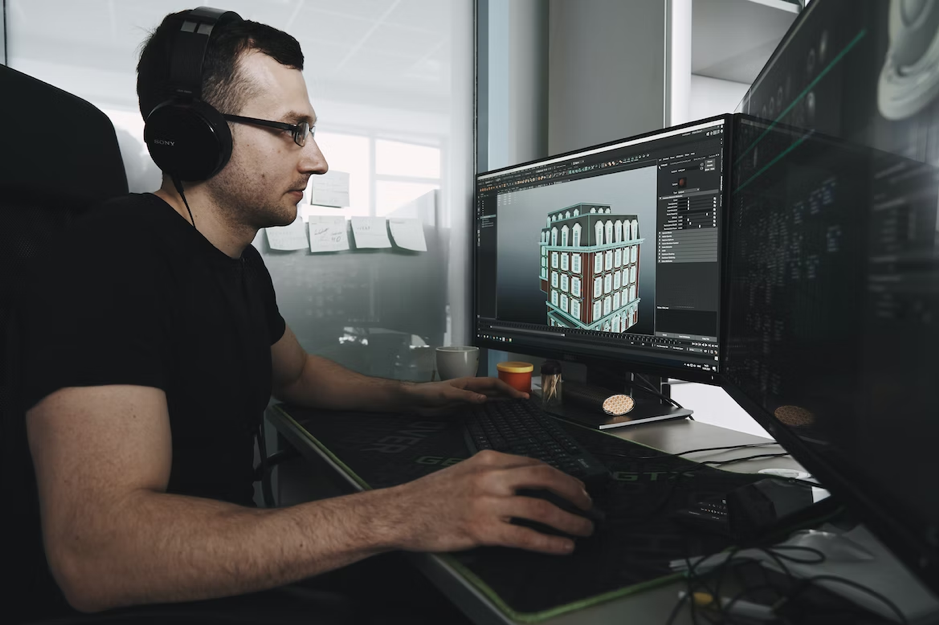Contents
3D scanning and modelling have rapidly evolved in recent years, becoming increasingly accessible to at-home consumers. With advancements in technology and affordability, you can now digitise objects and bring their creative ideas to life with ease. Whether you’re a hobbyist, a DIY enthusiast, or just looking to preserve an important object, understanding the different types of 3D scanning and modelling can be incredibly useful, and there’s no time like the present. Let’s look at some different types of 3D scanning and modelling.
Subtractive Scanning

Subtractive scanning is a process that involves removing material from an object to create a 3D model. This type of scanning is commonly used in industrial settings for creating prototypes or for manufacturing parts and products.
Additive Scanning
Additive scanning, on the other hand, is a process that involves adding material to an object to create a 3D model. This type of scanning is commonly used in the creation of sculptures, moulds, and other decorative objects.
Structured Light Scanning
Structured light scanning is a popular method of 3D scanning that involves projecting a pattern of light onto an object and capturing the resulting shape and texture. This method is useful for capturing complex shapes and details, making it a popular choice for artists and hobbyists.
LIDAR Scanning
LIDAR scanning is a method of 3D scanning that uses laser light to create a 3D model. This type of scanning is commonly used for creating maps, surveying land, and for capturing the details of large objects and landscapes.
Photogrammetry
Photogrammetry is a method of 3D scanning that uses photographs to create a 3D model. This type of scanning is commonly used for creating 3D models of buildings, landscapes, and other structures. It’s quite common with hobbyists and professionals alike.
Accessing 3D Scanning
While you can certainly purchase your own 3D scanner or modelling equipment, there are also many 3D scanning services available in Australia. These services can help you digitise an object or bring your creative ideas to life, even if you don’t have the technical expertise or equipment to do so yourself. These services can be a valuable resource for at-home consumers and small businesses due to being a low-cost, low-investment step into the 3D scanning world.
From small hobby projects to larger commercial endeavours, the use of 3D scanning and modelling technology has become increasingly common in recent years, as technology improves and becomes more widely available. When you’re trying to bring your object to life in the real world or even on your computer, these services are an invaluable resource to have at your disposal.
Reduce Your Overheads
One of the biggest benefits of using a 3D scanning service is the ability to digitise an object without having to invest in expensive equipment or technical expertise. These services can also provide professional-quality results, as well as the ability to work with a wide range of materials, including metal, plastic, and glass.
Another advantage of using a 3D scanning service is the ability to access the latest technology and software. With the rapid advancements in 3D scanning and modelling technology, many services have invested in the latest tools and techniques, ensuring that you have access to the best possible results. This can be especially important if you’re looking to bring a more complex idea to life.
You also need to consider the level of detail and accuracy required for your 3D project. Some services specialise in high-precision scanning, while others focus on capturing larger objects or landscapes. It’s important to choose a service that meets your specific needs, whether you’re looking to capture a fine-detail object or a larger structure.
Additionally, it’s important to keep the cost of the service in mind. While many 3D scanning services are more affordable than ever, it’s still important to consider the cost of the project, as well as any additional services that may be required, such as post-processing or 3D printing. Make sure that you’ve accounted for any add-on costs such as editing to clean up your scans, or even printed material costs if you end up printing out your objects.
With so many different types of 3D scanning and modelling to choose from, it’s important to understand the strengths and limitations of each method. Whether you’re a hobbyist, a DIY enthusiast, or just looking to bring your creativity to life, there’s sure to be a 3D scanning or modelling method that’s right for you.



